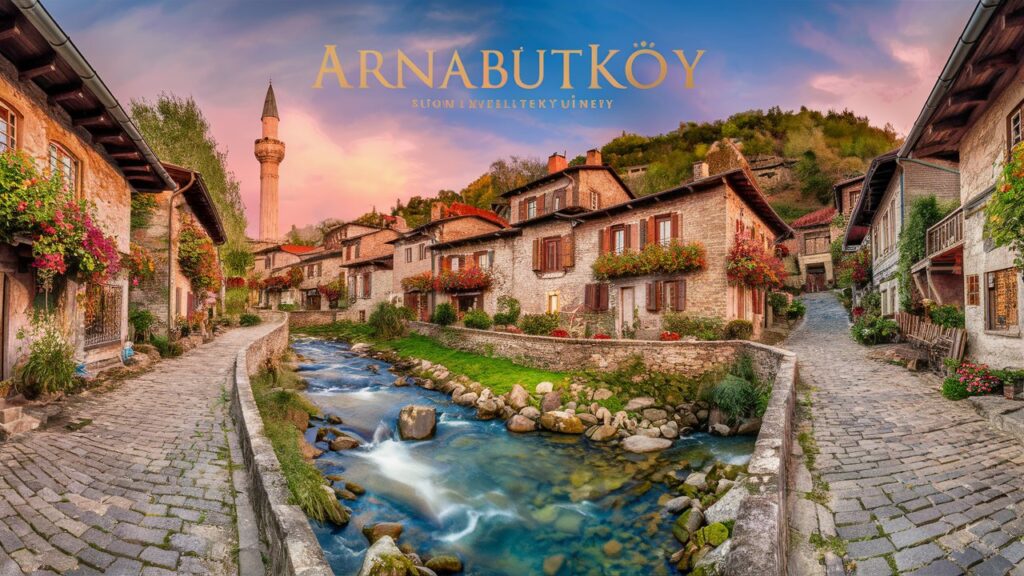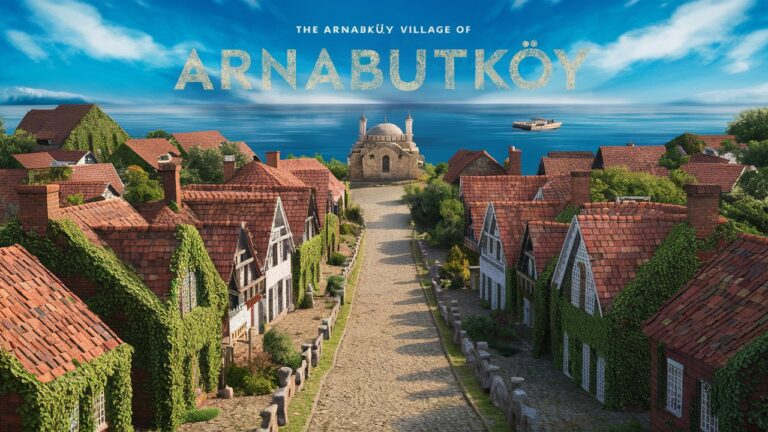Introduction
Nestled in the lush landscapes of Turkey’s Aydın Province, Arnabutköy (also spelled Arnabutköy) is a village steeped in history, culture, and natural beauty. Often overshadowed by Turkey’s bustling cities and coastal resorts, this quaint settlement offers a serene escape for travelers seeking authenticity. From its ancient ruins to its vibrant traditions, Arnabutköy embodies the soul of rural Anatolia. This article delves into the village’s unique identity, exploring its geography, cultural heritage, and lesser-known attractions. Whether you’re a history enthusiast or an eco-tourist, Arnabutköy promises an unforgettable journey into the heart of Turkey’s countryside.
1. The Historical Legacy of Arnabutköy
Arnabutköy’s history stretches back millennia, with archaeological evidence suggesting it was part of ancient Lydia and later the Byzantine Empire. The village’s name, derived from Turkish and Greek influences, hints at its multicultural past. Nearby ruins, including stone carvings and remnants of old settlements, tell stories of civilizations that once thrived here. Historians believe Arnabutköy served as a strategic stop along trade routes connecting the Aegean coast to Anatolia’s interior. Today, these historical layers are preserved in local museums and oral traditions, offering a window into the village’s enduring legacy.
2. Geographical Splendor: Arnabutköy’s Natural Landscape
Surrounded by rolling hills, olive groves, and meandering streams, Arnabutköy’s geography is a tapestry of biodiversity. The village lies in the fertile Büyük Menderes River basin, a region renowned for its agricultural productivity. Mild winters and sun-drenched summers create an ideal climate for cultivating figs, grapes, and cotton. To the east, the Aydın Mountains provide a dramatic backdrop, while hidden valleys and hiking trails beckon adventurers. The area’s natural hot springs, believed to have therapeutic properties, add to its allure as a wellness destination.
3. Cultural Traditions and Community Life
Arnabutköy’s culture is a vibrant blend of Turkish hospitality and age-old customs. The village’s annual festivals, such as the Zeytin Festivali (Olive Festival), celebrate its agrarian roots with music, dance, and communal feasts. Local artisans continue to practice traditional crafts, including pottery and carpet-weaving, using techniques passed down through generations. Family ties remain strong, with multi-generational households common. Visitors are often welcomed into homes for çay (tea) or gözleme (stuffed flatbread), reflecting the community’s warmth and openness.
4. Must-Visit Attractions in and Around Arnabutköy
While small, Arnabutköy boasts several unmissable sites. The Arnabutköy Mosque, with its Ottoman-era architecture, stands as a testament to the village’s Islamic heritage. Just outside the village, the ruins of Ancient Harpasa offer a glimpse into its Hellenistic past. Nature lovers can explore the Büyük Menderes National Park, home to diverse wildlife and scenic picnic spots. For a unique experience, join a guided tour of local olive oil cooperatives, where you’ll learn about the production process and sample fresh, aromatic oils.
5. Local Cuisine: A Gastronomic Journey
Arnabutköy’s cuisine is a celebration of fresh, locally sourced ingredients. Staples like olive oil, herbs, and dairy products feature prominently in dishes such as ayran (yogurt drink) and yaprak sarma (stuffed vine leaves). The village is also famous for its incir tatlısı (fig dessert), made from sun-ripened figs and walnuts. Family-run restaurants, or lokantas, serve hearty meals like kuzu tandır (slow-cooked lamb) alongside homemade bread. Don’t miss the chance to savor a traditional Turkish breakfast, complete with olives, cheese, and honey, at a local guesthouse.

Conclusion
Arnabutköy is more than a destination—it’s an invitation to slow down and connect with Turkey’s rural soul. Its rich history, breathtaking landscapes, and vibrant culture create a tapestry of experiences that linger long after departure. Whether wandering through ancient ruins, sharing stories with villagers, or savoring farm-to-table meals, visitors leave with a profound appreciation for this hidden gem. As tourism grows, Arnabutköy remains a reminder of the beauty found in simplicity and tradition.
Frequently Asked Questions (FAQs)
Q1: How do I get to Arnabutköy?
A: The nearest major city is Aydın, approximately 30 kilometers away. From Aydın, take a local bus or rent a car for a scenic drive through the countryside. Izmir Adnan Menderes Airport is the closest international hub, about 120 kilometers west.
Q2: What’s the best time to visit Arnabutköy?
A: Spring (April–June) and autumn (September–November) offer mild weather, ideal for outdoor activities. Summers can be hot but are perfect for enjoying evening festivals.
Q3: Are there accommodations in Arnabutköy?
A: Yes! Options range from cozy guesthouses (pansiyons) to eco-friendly lodges. Booking in advance is recommended during peak seasons.
Q4: Is English widely spoken in the village?
A: While Turkish is the primary language, younger residents and tour guides often speak basic English. Learning a few Turkish phrases will enhance your experience.
Q5: What should I pack for a trip to Arnabutköy?
A: Comfortable walking shoes, lightweight clothing for summer, layers for cooler evenings, and a reusable water bottle. Don’t forget a camera for capturing the stunning vistas!
Q6: Are there cultural etiquette tips I should know?
A: Dress modestly when visiting religious sites. Always remove shoes before entering a home, and greet elders with a handshake or slight bow as a sign of respect.
This comprehensive guide ensures your journey to Arnabutköy is as enriching as the village itself. Happy travels! 🌿✨
